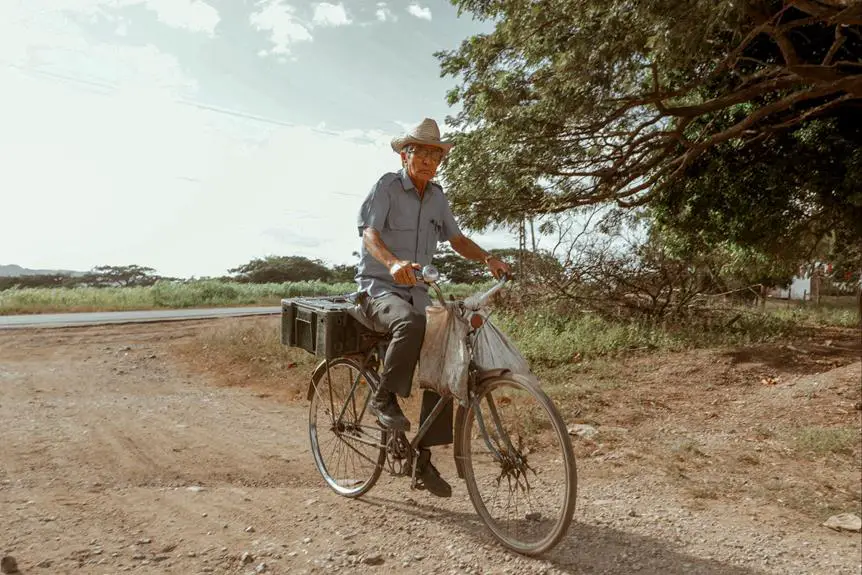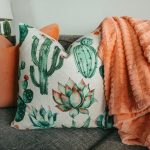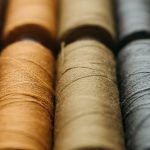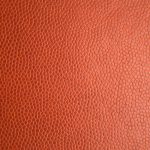When it comes to selecting the right fabric for your grow bags, there's more to consider than you might realize. Different fabrics offer unique benefits that can impact the growth and health of your plants.
Understanding the properties of each fabric can help you make an informed decision for your gardening needs. Let's explore six durable fabrics—polyethylene, polyester, geotextile, canvas, polypropylene, and burlap—that are worth considering for your grow bags.
Each material has its own strengths and characteristics, allowing you to choose the best option for your specific growing environment and plant requirements.
By selecting the right fabric, you can ensure that your plants have the ideal support and conditions for thriving.
Key Takeaways
- Polyethylene and polyester are durable fabrics that can withstand harsh weather and outdoor conditions.
- Geotextile is a versatile fabric option that facilitates proper drainage and air circulation for healthy plant growth.
- Canvas is a sturdy fabric that is resistant to tearing and stretching, making it suitable for grow bags and raised bed liners.
- Polypropylene is a fabric with exceptional strength, moisture resistance, and breathability, making it an ideal option for grow bags.
Polyethylene
Consider using polyethylene for your grow bags due to its durability and resistance to environmental conditions. When comparing polyethylene vs. polypropylene, polyethylene stands out for its strength and ability to withstand harsh weather, making it an excellent choice for landscaping and agriculture applications.
Polyethylene fabric is designed to endure outdoor conditions, including exposure to sunlight, moisture, and temperature fluctuations. This makes it a reliable option for long-term use in grow bag systems.
In landscaping, polyethylene grow bags are popular for their ability to retain moisture, provide proper aeration, and support healthy plant growth. The material's resistance to tearing and puncturing ensures that it can withstand the rigors of outdoor environments.
In agriculture, polyethylene grow bags offer similar benefits, providing a stable and durable container for cultivating various crops.
Polyester
When it comes to choosing a fabric for your grow bags, polyester is a durable option worth considering. Its strength and resistance to abrasion make it a reliable choice for gardening.
You'll benefit from using polyester grow bags, as they can withstand the rigors of outdoor conditions and provide long-lasting support for your plants.
Polyester's Durability for Gardening
You should choose a high-quality polyester fabric for your grow bags, as it offers excellent durability for gardening. Polyester's strength and resistance to tearing make it an ideal choice for withstanding the rigors of outdoor use. Here's why it's a great option:
- Toughness: Polyester fabric is known for its toughness, making it highly resistant to abrasions and wear and tear from constant use in gardening.
- Weather Resistance: This material can withstand various weather conditions, including sunlight, rain, and wind, ensuring that your grow bags remain intact and functional over time.
- Low Maintenance: Polyester is easy to clean and maintain, allowing you to focus more on your gardening tasks without worrying about the fabric deteriorating quickly.
When it comes to durable materials for gardening, polyester stands out for its reliability and ability to endure the demands of outdoor cultivation.
Benefits of Using Polyester
Polyester offers numerous benefits for gardening due to its durability and resistance to outdoor elements. The advantages of using polyester fabric in grow bags include its ability to withstand UV rays, moisture, and temperature fluctuations, making it a long-lasting option for outdoor use.
Additionally, polyester is resistant to mold and mildew, which helps maintain a healthy growing environment for your plants. However, it's essential to consider the drawbacks of polyester, such as its non-biodegradable nature and potential for retaining heat, which can affect root temperatures.
To maximize the benefits of polyester in grow bags, ensure proper drainage and aeration to prevent waterlogging and allow air circulation around the roots. Regularly inspect the fabric for any signs of wear and tear, and consider using light-colored polyester to reflect sunlight and reduce heat absorption.
Geotextile
If you're looking for a durable and versatile fabric for your grow bags, geotextile is an excellent choice. Geotextiles are widely used in various applications due to their exceptional properties.
Here's why geotextile is a fantastic option for your grow bags:
- Drainage: Geotextiles facilitate proper drainage, preventing water from accumulating in the grow bags and ensuring that your plants receive the right amount of moisture.
- Root Aeration: The breathable nature of geotextile allows for air circulation, promoting healthy root growth and preventing the soil from becoming waterlogged.
- Durability: Geotextile is designed to withstand outdoor conditions, making it a long-lasting choice for your grow bags. It can resist UV degradation and is resistant to rotting, ensuring that your grow bags remain sturdy season after season.
Geotextile's applications extend beyond grow bags, as its properties make it suitable for erosion control, soil stabilization, and construction projects.
Canvas
When considering durable fabrics for your grow bags, canvas stands out as a reliable option. Canvas fabric is known for its sturdiness, making it an excellent choice for grow bags that need to withstand the rigors of outdoor gardening. The tightly woven fabric properties of canvas make it resistant to tearing and stretching, ensuring that your grow bags will maintain their shape and integrity over time. Additionally, canvas is breathable, allowing for proper aeration and moisture regulation for your plants' roots.
Canvas fabric has a wide range of applications in gardening, including the construction of grow bags, planter bags, and raised bed liners. Its durability and strength make it suitable for supporting the weight of soil and plants while withstanding outdoor conditions. Canvas grow bags provide ample space for root growth and can be easily transported or rearranged in your garden.
Polypropylene
Consider using polypropylene for your grow bags if you need a durable and versatile fabric option. Polypropylene offers several advantages that make it an excellent choice for your gardening needs. Here's why polypropylene is worth considering:
- Strength and Durability: Polypropylene is known for its exceptional strength and durability, making it ideal for withstanding the rigors of outdoor use. It can endure varying weather conditions without deteriorating, providing a long-lasting solution for your grow bags.
- Moisture Resistance: Polypropylene is inherently resistant to moisture, preventing water from seeping through and keeping the soil in your grow bags adequately contained. This feature helps maintain optimal growing conditions for your plants.
- Lightweight and Breathable: Unlike some heavier fabrics, polypropylene is lightweight and breathable, promoting proper air circulation and allowing excess moisture to evaporate. This helps prevent waterlogging and creates a healthy environment for your plants to thrive.
When considering alternatives, keep in mind that polypropylene offers a unique combination of strength, moisture resistance, and breathability that make it a standout choice for your grow bags.
Burlap
To further explore durable fabric options for your grow bags, consider burlap, a material that offers unique properties for your gardening needs.
Burlap, also known as hessian, is a natural, biodegradable fabric made from jute fibers, making it an eco-friendly choice for grow bags. Its durability is a key feature, as burlap can withstand outdoor conditions and resist tearing, providing long-lasting support for your plants.
When exploring burlap alternatives, keep in mind that this fabric is breathable, allowing for proper aeration and moisture retention in the soil, which is crucial for healthy plant growth.
In addition to its durability, burlap is also versatile and can be used for various gardening purposes, including protecting plants from harsh weather, erosion control, and as a wrap for root balls during transplanting.
However, it's important to note that while burlap is durable, it may degrade over time, especially when exposed to constant moisture. To maintain its longevity, consider using burlap in combination with a more water-resistant material for added protection.
When considering fabric options for your grow bags, burlap's durability and versatility make it a compelling choice for your gardening endeavors.
Frequently Asked Questions
Can These Durable Fabrics Be Used for Grow Bags in Both Indoor and Outdoor Gardening Environments?
Yes, these durable fabrics can be used for grow bags in both indoor and outdoor gardening environments. You can customize the fabric to suit your specific needs, providing a versatile solution for all your gardening requirements.
Are There Any Specific Care Instructions for Maintaining the Durability of These Fabrics Over Time?
To maintain the durability of these fabrics, follow specific care instructions and maintenance tips. Regularly clean and inspect the fabric for any signs of wear or damage. Avoid exposing the fabric to harsh chemicals or excessive sunlight.
How Do These Fabrics Compare in Terms of Water Retention and Breathability for Optimal Plant Growth?
When comparing water retention and breathability in fabrics, it's essential to consider the specific needs of your plants. Different fabric choices excel for various plant types, so assess your plant's requirements for optimal growth.
Are There Any Environmental Considerations to Take Into Account When Choosing a Fabric for Grow Bags?
When choosing a fabric for grow bags, it's important to consider the environmental impact and sustainability in production. Look for materials that are eco-friendly and produced using sustainable practices to minimize your ecological footprint.
Can These Fabrics Be Easily Customized or Modified for Different Sizes or Shapes of Grow Bags?
You can easily customize and modify these fabrics for different sizes or shapes of grow bags. They offer size flexibility and various customization options. Additionally, you can compare their breathability to select the most eco-friendly option.
- Tetron Fabric for Marine Applications: Durability and Use Cases - June 18, 2025
- Tetron Fabric for Outdoor Furniture: Weather Resistance and Care - June 18, 2025
- Tetron Fabric for Wall Coverings: Style and Application Tips - June 18, 2025







